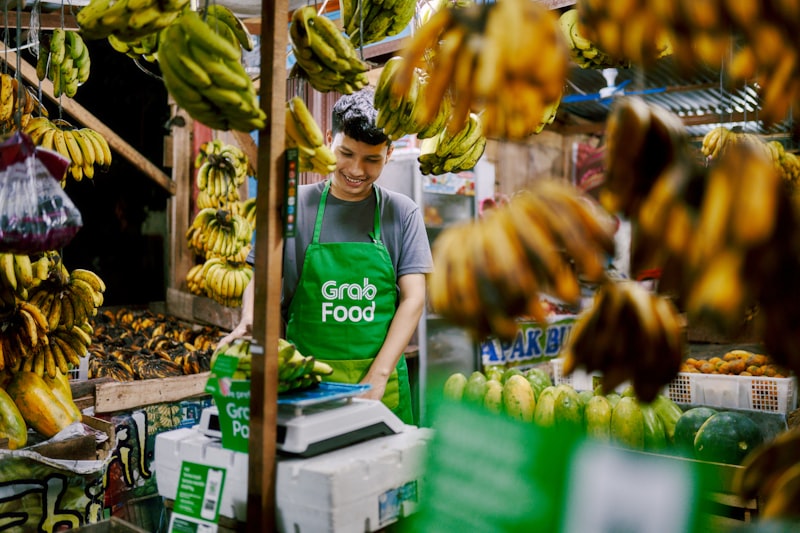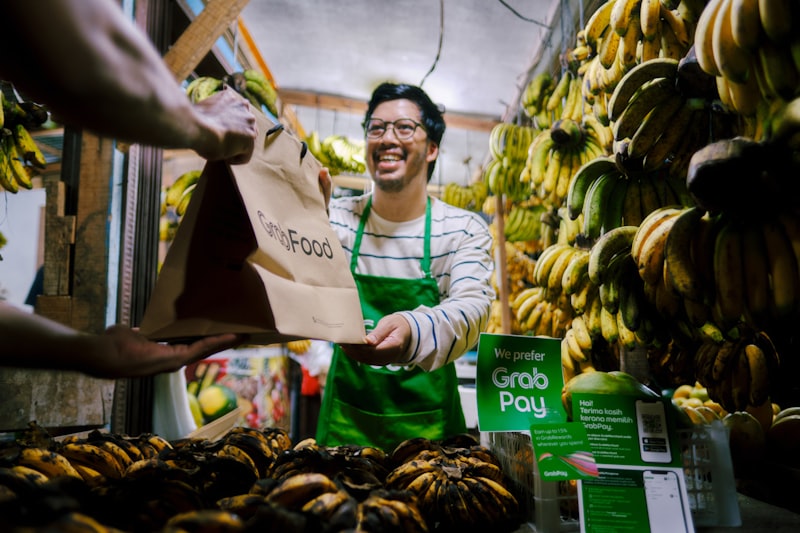Imagine walking into a grocery store and picking up a perfectly ripe tomato that was grown locally in a vertical farm just down the road. These farms use cutting-edge technology like hydroponics and LED lighting to grow crops efficiently indoors, using less water and space than traditional agriculture. This means fresher produce with a smaller environmental footprint.

But it doesn’t stop there. Advances in genetic engineering could soon allow scientists to create crops that are more nutritious and resistant to pests and diseases. Imagine bananas enriched with extra vitamins or rice that contains more protein. These innovations could help combat malnutrition and food insecurity around the globe.
In the kitchen, 3D food printing is set to transform how chefs and home cooks create meals. This technology allows users to print intricate designs with edible ingredients, layer by layer. It’s not just about aesthetics; 3D printing can also customize food textures and flavors, catering to individual preferences and dietary requirements.
And let’s not forget about sustainability. With the world’s population expected to reach nearly 10 billion by 2050, food technology is crucial in ensuring we can feed everyone without depleting our planet’s resources. From plant-based alternatives to lab-grown meat, innovations in food technology are paving the way for a more sustainable food system.
From Lab to Table: How Food Tech Innovations Are Revolutionizing Dining
Picture a bustling kitchen where chefs are not just wielding knives and pans but also using state-of-the-art gadgets and science-backed methods to create culinary wonders. This isn’t science fiction; it’s the reality of modern gastronomy. Food tech innovations encompass a wide array of advancements, from biotechnology that enhances food’s nutritional value to precision cooking techniques that ensure every bite is perfection.
Take plant-based meat alternatives, for instance. In labs worldwide, scientists are meticulously analyzing and recreating the taste, texture, and even the sizzle of meat using plant proteins. This isn’t just about catering to vegetarians or vegans; it’s about offering sustainable options that reduce our environmental footprint without sacrificing flavor.
Moreover, imagine personalized nutrition tailored to your unique DNA. Companies are leveraging genetic insights to recommend diets that optimize health outcomes. It’s like having a personal nutritionist who understands your body’s needs at a molecular level.
Food safety is another frontier being revolutionized by tech. Blockchain technology is being used to track food from farm to fork, ensuring transparency and reducing the risk of contamination outbreaks. Consumers can now trace the journey of their food, knowing precisely where it came from and how it was handled.

And what about the dining experience itself? Virtual reality dining is on the horizon, where diners can immerse themselves in different culinary settings without leaving their homes. It’s a blend of food and entertainment, pushing the boundaries of traditional dining experiences.
Beyond Meat: Exploring the Next Generation of Plant-Based Foods
Imagine a burger so juicy, so flavorful, and so delicious that you wouldn’t believe it’s made entirely from plants. That’s the magic of Beyond Meat. Founded on the belief that we can create mouthwatering, protein-packed alternatives to meat without sacrificing taste or texture, Beyond Meat has become a trailblazer in the realm of plant-based foods.
But what exactly sets Beyond Meat apart from the rest? It all boils down to their commitment to innovation and quality. Using cutting-edge technology, Beyond Meat has mastered the art of replicating the taste and feel of meat using plant-based ingredients. From burgers to sausages to ground “beef,” their products are crafted to satisfy even the most discerning carnivore.
Beyond Meat isn’t just about creating tasty alternatives; it’s also about sustainability. By choosing plant-based options over traditional meat, we can significantly reduce our carbon footprint and promote environmental stewardship. It’s a win-win for both our taste buds and the planet.
One of the key ingredients that sets Beyond Meat apart is their use of pea protein. This powerhouse protein not only provides a substantial nutritional profile but also mimics the fibrous texture of meat. Combined with other natural ingredients and a secret blend of spices, Beyond Meat products deliver an experience that’s as satisfying as it is sustainable.
Whether you’re a committed vegan, a curious omnivore, or someone looking to make healthier choices, Beyond Meat offers something for everyone. Their products aren’t just meat alternatives; they’re a delicious invitation to explore a new era of food innovation.
Virtual Taste: Will Digital Dining Be the Norm in Tomorrow’s Restaurants?
So, what exactly is virtual taste? It’s not about replacing real food with digital alternatives; instead, it enhances the dining experience through multisensory stimulation. Imagine using specialized devices or even augmented reality (AR) glasses that simulate the taste of your favorite dish without the need to physically consume it. It’s like a symphony for your taste buds, where flavors are composed digitally but experienced as vividly as if they were real.
The appeal of virtual taste extends beyond novelty. Imagine being able to taste-test a dish before ordering it, ensuring you get exactly what you crave. For chefs, it opens up a world of creative possibilities, where they can experiment with flavors and combinations virtually before bringing them to life in the kitchen.
But will digital dining become the norm? The answer might lie in how well these technologies can replicate the richness and complexity of real flavors. Just as virtual reality (VR) has transformed entertainment and education, digital dining aims to create an immersive culinary experience that engages all the senses.
However, challenges remain. Can technology truly replicate the nuances of taste and texture that make dining a sensorial delight? Will consumers embrace the idea of virtual taste experiences as readily as they do traditional dining? These are questions that chefs, technologists, and consumers themselves are exploring as the concept evolves.
While digital dining holds promise as a futuristic dining experience, its widespread adoption hinges on technological advancements and consumer acceptance. As we continue to push the boundaries of what’s possible in the culinary world, one thing is certain: the future of dining is set to be a tantalizing blend of innovation and tradition, where every meal is a journey of discovery.
3D-Printed Meals: The Culinary Frontier of Personalized Nutrition
3D-printed meals represent a groundbreaking leap into personalized nutrition. This innovative technology allows chefs and nutritionists to design meals that are perfectly balanced in terms of nutrients, portion sizes, and dietary requirements. Whether you’re an athlete needing specific protein ratios or someone with dietary restrictions, 3D-printed meals can be customized to fit your needs like never before.
But how does it work? Picture a chef not wielding knives but commanding a high-tech printer. Instead of ink, this printer uses edible ingredients—proteins, carbohydrates, fats, vitamins—that are layered precisely to form food items. It’s like building a delicious sculpture layer by layer, ensuring each component is placed exactly where it should be for maximum flavor and nutrition.
One of the most astonishing aspects of 3D-printed meals is their potential to revolutionize how we think about food preparation. Traditional cooking methods often rely on heat and time to transform ingredients, but 3D printing allows for a more controlled and efficient process. This means less waste, shorter cooking times, and the ability to create complex shapes and textures that would be challenging to achieve manually.
Imagine biting into a perfectly balanced meal that not only satisfies your hunger but also meets your health goals seamlessly. Whether you’re aiming to lose weight, gain muscle, or manage a medical condition, 3D-printed meals offer a precise solution that traditional cooking methods simply can’t match.
Frequently Asked Questions
What role will artificial intelligence play in the future of food technology
Discover how artificial intelligence is revolutionizing food technology, enhancing efficiency in farming, personalized nutrition, and food safety through advanced analytics and automation.
How can food technology address global food security challenges
Learn how food technology innovations contribute to tackling global food security challenges, including improvements in food production efficiency, preservation methods, and nutritional enhancement to meet the growing demand sustainably.
How will food technology innovations impact agriculture and food production
Discover how advancements in food technology are revolutionizing agriculture and food production. Learn about the transformative effects on efficiency, sustainability, and nutrition through innovative practices like precision farming, biotechnology, and alternative proteins.
What are the key trends shaping the future of food technology
Explore the evolving landscape of food technology with insights into key trends that are shaping its future, from sustainable packaging and plant-based alternatives to AI-driven nutrition and personalized diets.
What are the ethical implications of advancements in food technology
Learn about the ethical implications of advancements in food technology, exploring issues such as genetically modified organisms (GMOs), food safety concerns, environmental impacts, and equitable access to food resources.


